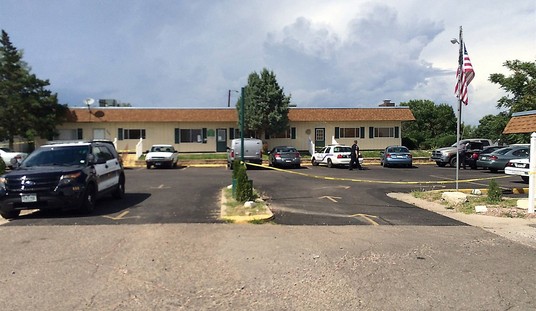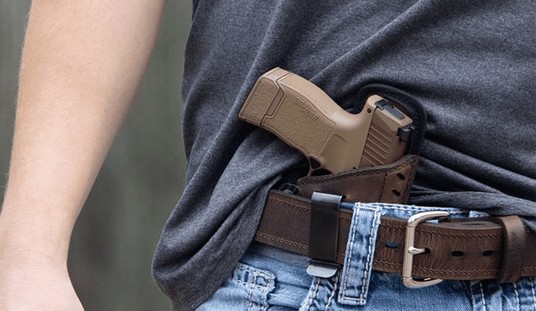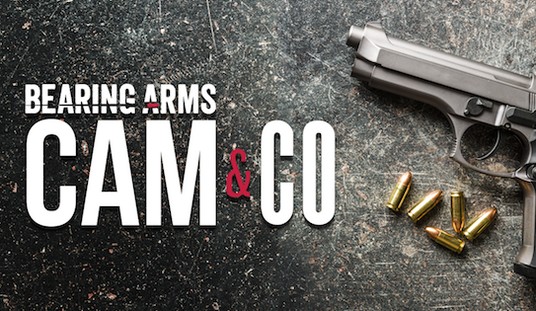This is Part One of a series of three articles by author Bentley Gates on the history of sidearms in the US military. This first part reviews the Flintlock Handguns, 1775 to 1844. Part Two will delve into the Percussion Cap Era, 1837 to 1870. Finally, Part Three will review the handguns of the Modern Period 1870 to Present. Readers please note there are some overlaps of the periods because of the developing technologies and the slow acceptance of the Army brass to change even back then. The intent of this article is not to be all-inclusive, rather as representative of the firearms selected as sidearms for issue during each period.
Beginning with the War of Independence, and up until today the American soldier has relied on a handgun as their principle sidearm for up close and personal combat. Privately owned handguns comprised the majority of the earliest sidearms of the Continental Army. Dueling pistols such as the sets made by Wogdon of London were handmade and very expensive, so only officers could afford to carry such fine weapons. The foot soldier often brought his personal sidearm, handmade by a local gunsmith, with wide variances in bores, actions, and quality.
At the time of the American Revolution, the British fielded the “New Model 1760” flintlock pistol. American arms makers were quick to copy the design and the Continental Congress purchased two thousand copies, now designated the Model 1775 and made by Rappahannock Forge in Virginia. Considered by some as the first US Army issued handgun, this .62 caliber flintlock is single-shot, with full-length stock and the iron or ash ramrod stored beneath the muzzle. The muzzle-loading pistol found favor with the troops for its accuracy despite the smooth bore. After the war, the M1775 continued in favor, but cash strapped congress sought newer, less expensive models.
Harper’s Ferry produced copies of the M1775, modified and re-designated the M1805 and the weapon continued in service alongside other models for several decades. This was truly a classic design serving over fifty years as a standard issue weapon. A pair of crossed M1805 flintlocks is the emblem used to represent the US Army Military Police Corps, and a similar flintlock appears on the US Navy SEALs “Trident” emblem.
In 1799, the War Department signed the first of many contracts with inventor, manufacturer and entrepreneur, Simeon North of Berlin, Connecticut. His flintlock pistol was markedly different than what most soldiers were used to, with no fore stock, a side-mounted ramrod, brass frame and large .75 caliber bore. Although North insisted on tight tolerances for the Model 1799 parts interchangeability remained a problem.
At the time, non-interchangeability of parts rendered most damaged weapons non-repairable. Even broken stocks would often require handcrafting an entire new one as the metal works differed so much between each weapon. The works of Simeon North, Eli Whitney, Thomas Blanchard and John Hall all contributed significantly to the industrial revolution including the standardization of parts.
Their collective efforts directly affected gun manufacturing, removing the highly skilled gunsmith from the role of maker of firearms, relegating him to that of a repairman. Firearm factories began employing low-skill labor on new highly accurate milling machines to accomplish new tolerance levels unachievable in the one gun/one gunsmith method of manufacture.
North completed his first contract of 1799, followed by several others through the early 1800’s, each showing steady improvement in design. Finally in 1813 he signed a truly groundbreaking contract. This is the first known US government contract to include the requirement that all parts of the weapon must be interchangeable with all others of the same type. The contract called for North to produce 20,000 of these handguns for use by the US military. These were quite representative of the highest tech of the day being a single-shot, muzzle loading, .69 caliber, steel barreled, full stocked, flintlock. These were most likely one of the predominate pistols at the Battle of the Alamo, being popular as both accurate and durable handguns.
Springfield Armory offered a variant, the Model 1817 in a .54 caliber bore. This longer barreled, full-stocked flintlock handgun was one of few handgun types produced at that time by the Springfield Armory, highly renowned for its rifles. Dragoons used the M1817 was as a “saddle pistol” because the length made it harder to carry as a sidearm. Army Dragoons usually carried them as a brace of two pistols in a leather holster designed to fit over the saddle of their horses. The sidearm occupies a place between a pistol and a carbine.
North continued to improve upon designs and incorporate new technology. He produced the Model 1826 for the US Navy, a .54 caliber pistol with eight-inch barrel. At sea, it was common for boarders to carry a brace of pistols; that is two to six handguns loaded and ready to fire as they fought their way aboard the enemy’s ship. This pistol is an exceptionally strong well-balanced design with a steel buttplate making it an effective pummel once fired, becoming a favorite as one of the last of the flintlocks adopted by the Navy.
Another oddity and last-of-an-era pistols is one adopted by the US Navy in 1836, the cutlass-pistol. This weapon combined the firepower of a single shot muzzle-loading flintlock pistol with that of a short cutlass. Some underwent later conversion to a percussion firing mechanism and stayed in service.
The last flintlock pistol adopted by the US military was the Waters Model 1836, produced through about 1844 with total production near 40,000 units. It was a flintlock pistol in .54 caliber, bearing only half-stock, with a steel swivel-based ramrod. Standard issue during the Mexican-American War, it continued to see service into the Civil War often undergoing conversion into a percussion cap version.
The Flintlock domination wanes as the 1840’s close with the introduction of the Walker Colt during the Mexican-American War in 1847. The new Colts quickly gained favor and fame, but had rivals in becoming the official handgun of the US Military. Guns and Patriots will examine those fine sidearms in Part Two of the series next week when we review the Percussion Cap Era.
Editor’s Note: Interested in great writing, Navy SEALs and suspense? Then check out http://www.thebahrainconspiracy.com/ – a novel by Bentley Gates.








Join the conversation as a VIP Member